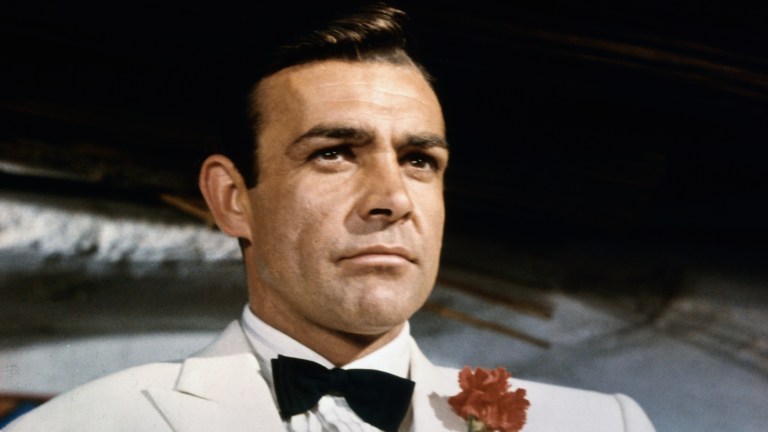Why James Bond Creator Ian Fleming Didn’t Originally Want Sean Connery to Play 007
Everyone thinks of Sean Connery as the ideal James Bond. Everyone but 007 creator Ian Fleming, that is.

Even before the final moments of No Time to Die made abundantly clear that a James Bond of the Daniel Craig variety would not return, people began wondering about the identity of the next 007. Eon Productions has not yet answered that question, despite rumors that Aaron Taylor-Johnson has been offered the part. Whoever ends up getting the honor to be the face of a new era of Bond, expectations are very high.
It’s a time honored tradition, one that goes all the way back before the first Eon Bond movie Dr. No released in 1962. While that movie, and especially its two follow-ups From Russia With Love (1963) and Goldfinger (1964), established Sean Connery as the Bond by which every other actor is now judged, the character’s creator, the novelist Ian Fleming, had something different in mind for his super spy. In fact, Fleming didn’t want Connery at all.
“He’s not my idea of Bond at all, I just want an elegant man, not this roughneck,” Fleming allegedly told his film agent Robert Fenn (via Variety) when Connery was cast, apparently angered by the fact the actor “couldn’t speak the Queen’s English.”
As absurd as that sounds now, it’s important to remember that Fleming drew from his own experiences in British intelligence and had a clear understanding of what he expected for his character. Fleming imagined Bond as a blunt instrument, to be sure, a man with “dark, rather cruel good looks” as the novels repeatedly state. But he also expected Bond to have a level of sophistication about him, befitting his education at Eton College.
Fleming imagined someone like Richard Burton or David Niven as Bond, and even liked producers Albert Broccoli and Harry Saltzman’s choice of Cary Grant. Although Connery won over Broccoli and Salzman through a disinterested interview with the producers, Fleming didn’t agree. “I’m looking for Commander Bond and not an overgrown stuntman,” the author said of the casting, and dismissed him outright.
It then fell to Dr. No director Terrence Young to prove to Fleming that Connery could become the man he wanted. “I had a very clear idea of what an old Etonian should be,” Young told Rolling Stone in 1983. “So I took Sean to my shirtmaker, my tailor, and my shoemaker, and we filled him out.”
The look helped convince Fleming, but not as much as seeing Connery in action as Bond. Connery captured the brutality of Bond, a roughness that the external refinements could never completely hide. Whether he’s bullying women or baccarat opponents, Connery plays Bond like a man who does whatever he needs to get the job done.
Over the years, Fleming liked Connery so much that he began to change his description of Bond on the page to match the looks of the actor. He even later revealed Scottish lineage in Bond’s heritage, a true nod of approval toward the actor. For his part, Connery didn’t hold the reluctance against the author. “A terrific snob,” Connery said of Fleming in 1983; “but very good company—tremendous knowledge, spoke German and French, got an interview with Stalin one time when he was working for Reuters.”
Does this change of heart mean that Fleming was wrong about his reservations? Of course not. Everyone, from author to reader, has a certain vision of the characters they love, and it’s only natural to prefer one take over another. However, it does show that there is never one platonic version of a fictional character and that something wonderful can happen if we take a chance on a different take. That’s a lesson we’d all do well to remember as the next era of Bond begins.
